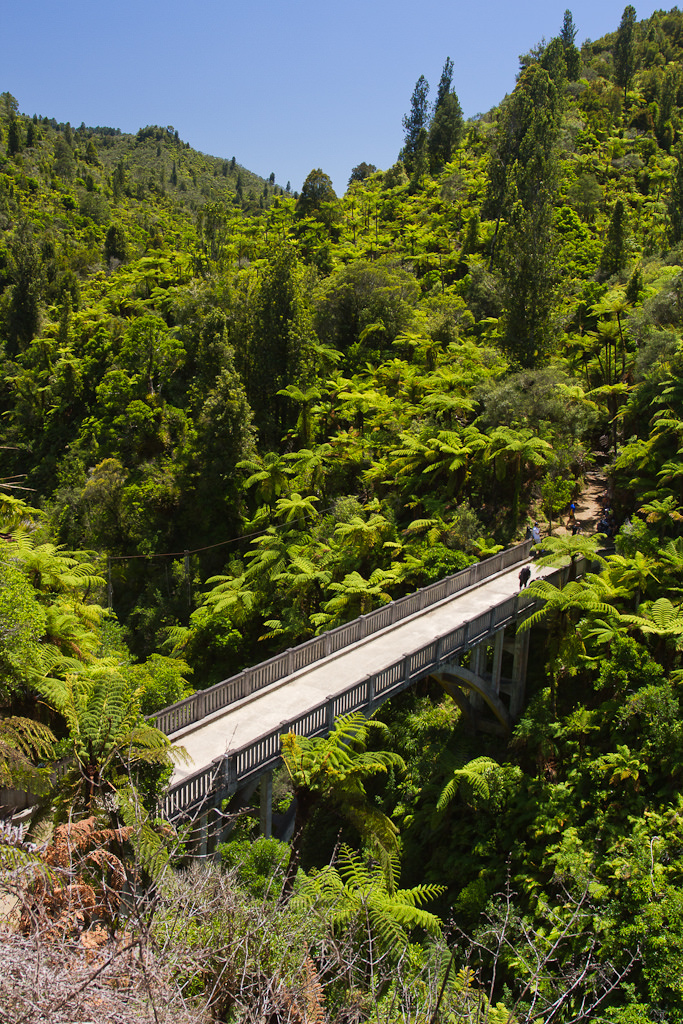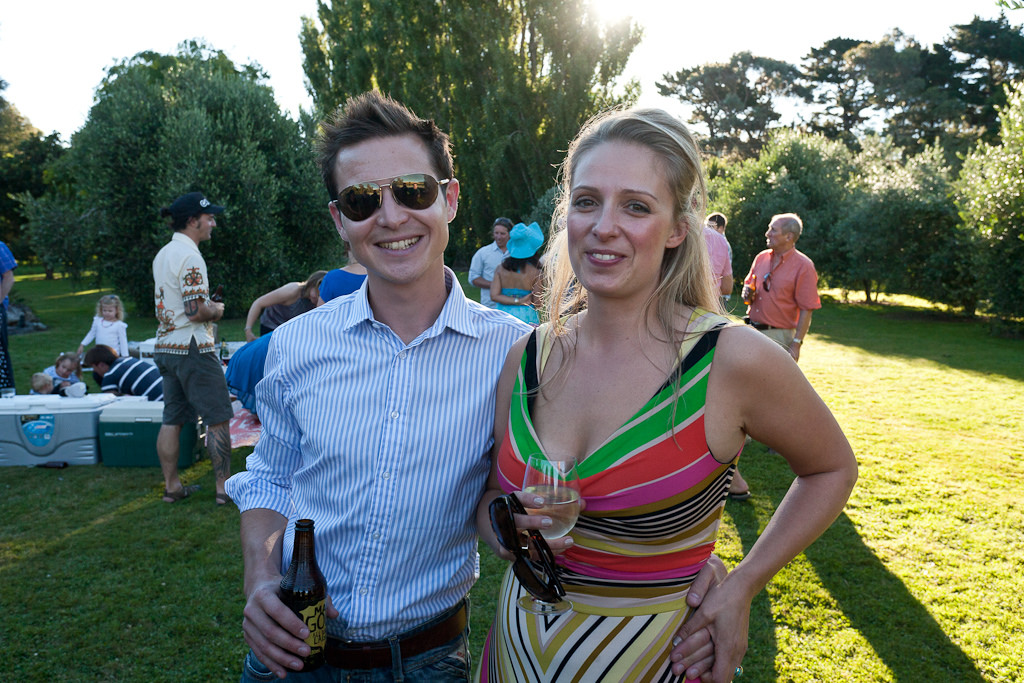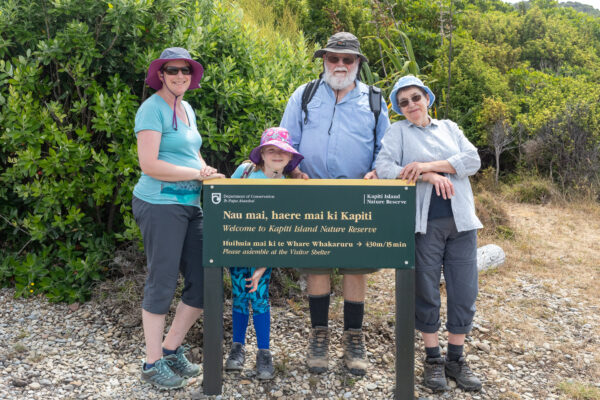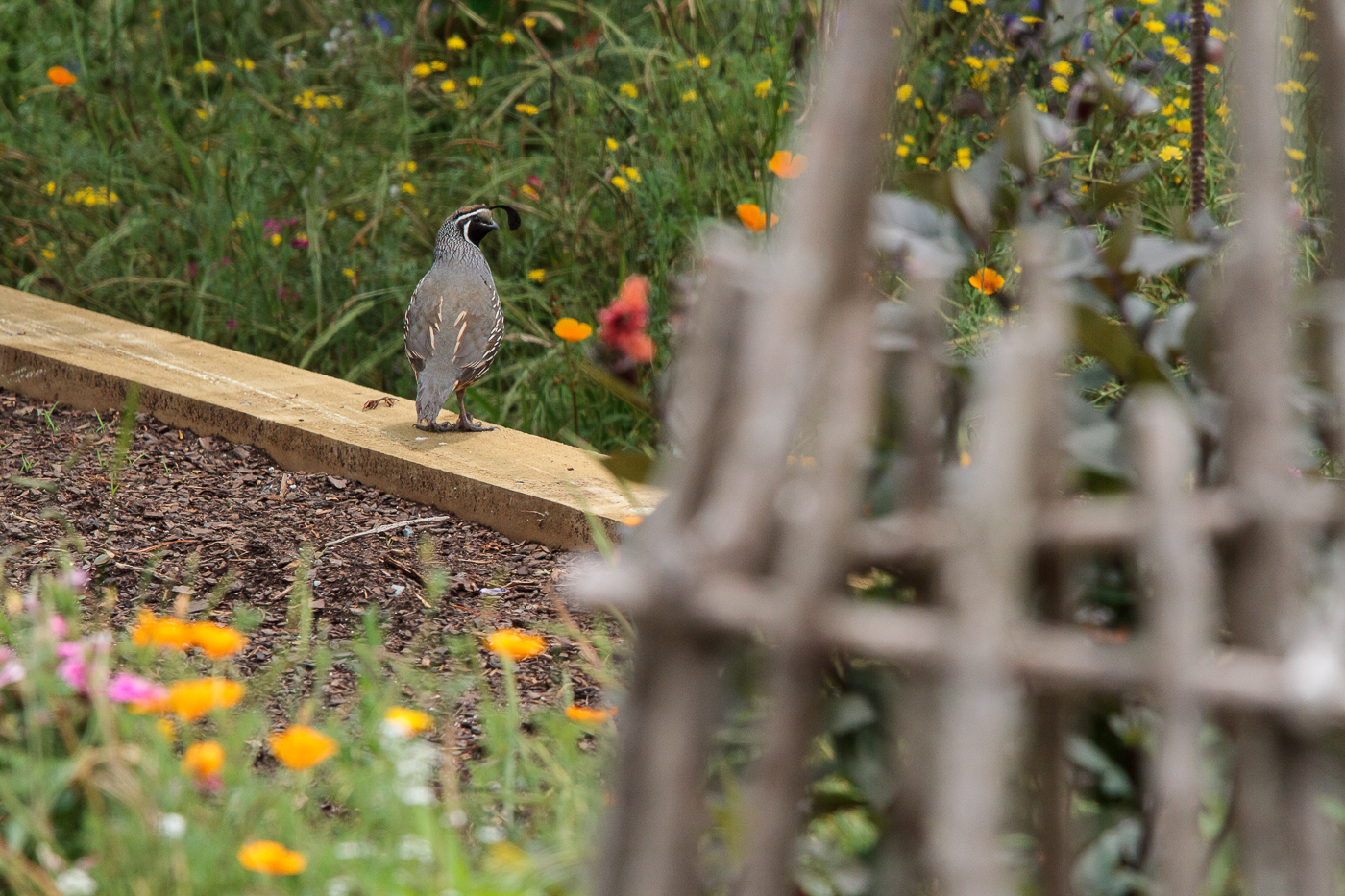Driving west from Ohakune we made our way to the tiny town of Pipiriki to find the Bridge to Nowhere tour office. The Bridge to Nowhere is a Whanganui River attraction, a large concrete bridge built to connect a road with a remote farming community. With the collapse of wool markets and other economic hardships such as the great depression of the early 20th century the community was closed down and the road building abandoned. Now the bridge spans the Mangapurua Gorge in the middle of regenerating forest inside the Whanganui National Park and can only be easily reached via the Whanganui River and then a 40 minute walk through the forest.
Being in the peak holiday season it was expected that there would be a few people taking tours and we arrived to find people milling around and Joe trying to organise everyone. We were early and once we had paid we relaxed while the different groups were organised. We were part of the last group to get our life jackets and walk down to the wharf to board our jet boat for the ride upriver.
The other six passengers in the jet boat were not visiting the bridge, taking the ride so they could canoe back for a few hours down the river. Four of the six looked like they’d last no more than a few minutes in canoes and later we saw these four being picked up minus one of their canoes.
Continuing we were dropped off by Joe to walk into the forest and find the bridge. The path was mostly flat and there were a few spots to get views into the Mangapurua Gorge. At the bridge we had the option of a hot drink and a selection of biscuits which complemented the lunch we had bought along. Once everyone was rested and fed the guide for the group, Ben, gave us a bit of history on the bridge and the families that had come to tame this rather wild location.
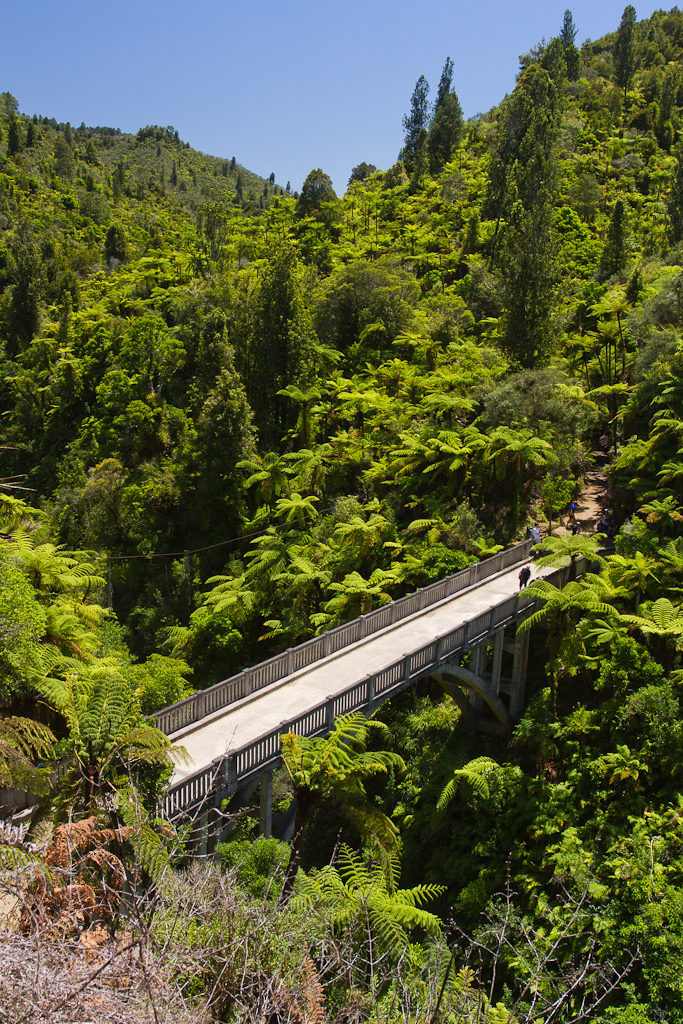 Photo by Brendon & Keryn
Photo by Brendon & Keryn
Here follows a summary whcih apparently can be seen on a sign on the bridge (I didn’t see the sign, but that doesn’t mean it wasn’t there):
“Started in January 1935 and completed in June 1936, this bridge was built by the Raetihi firm of Sandford and Brown, for the Public Works Department. It is 130 feet long, and 125 feet above the stream. The cost of labour was 598 pounds 11 shillings 7 pence, and cartage of all materials (via the Mangapurua Valley road) cost 419 pounds 14 shillings. Unfortunately the cost of materials was not recorded. Aggregate for the concrete is said to have been transported from the Rangitikei River. The completion of the bridge was delayed considerably due to floods, slips, and the consequent delay in the supply of materials. The bridge was built to facilitate vehicular access to the Wanganui River, to link the settlers of the valley with the riverboat service. In 1917 the Government opened up the valley for settlement by soldiers returning from World War I. Virgin forest was cleared, and a total of 35 holdings developed. A school was opened, and for some years the valley prospered. However economic hardship, and problems associated with the remoteness and difficulty of access, resulted in many families abandoning their farms. By 1942 there were only 3 families left. After a major flood in January 1942 the Government declined to make further funds available for road maintenance, and it officially closed the valley in May 1942. The disappearing road line, old fence lines, stands of exotic trees, occasional brick chimneys, and this bridge serve as reminders of the ill fated settlement of the Mangapurua valley.”
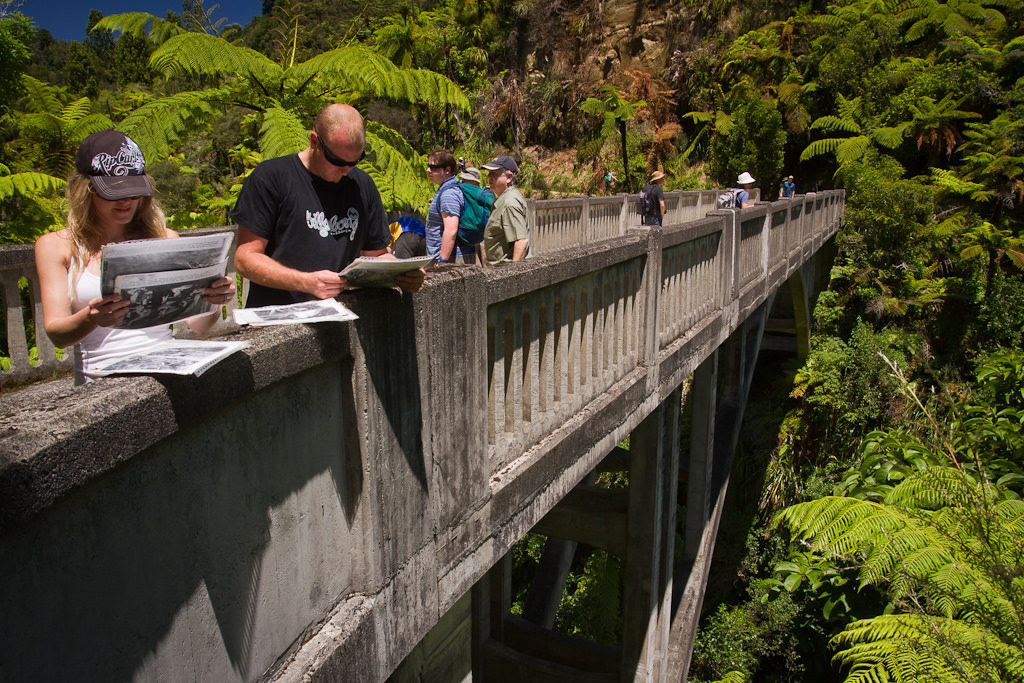 Photo by Brendon & Keryn
Photo by Brendon & Keryn
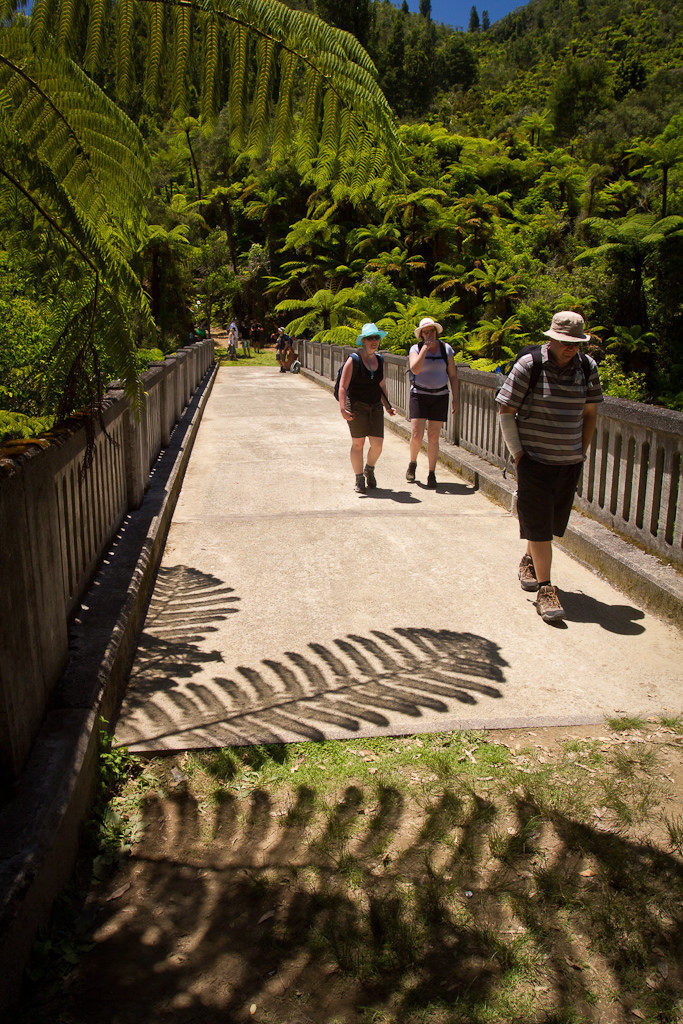 Photo by Brendon & Keryn
Photo by Brendon & Keryn
History lesson over and questions answered we walked back to the river where we awaited transport downriver. We were in a jet boat piloted by Ben and with Joe in the other larger boat we zipped through the water passing steep cliffs, small canyons and waterfalls hidden in caves. A researcher from Frommers was on the other bat and he was taking lots of photos of our boat, maybe the next New Zealand guide will have a photo of us in it.
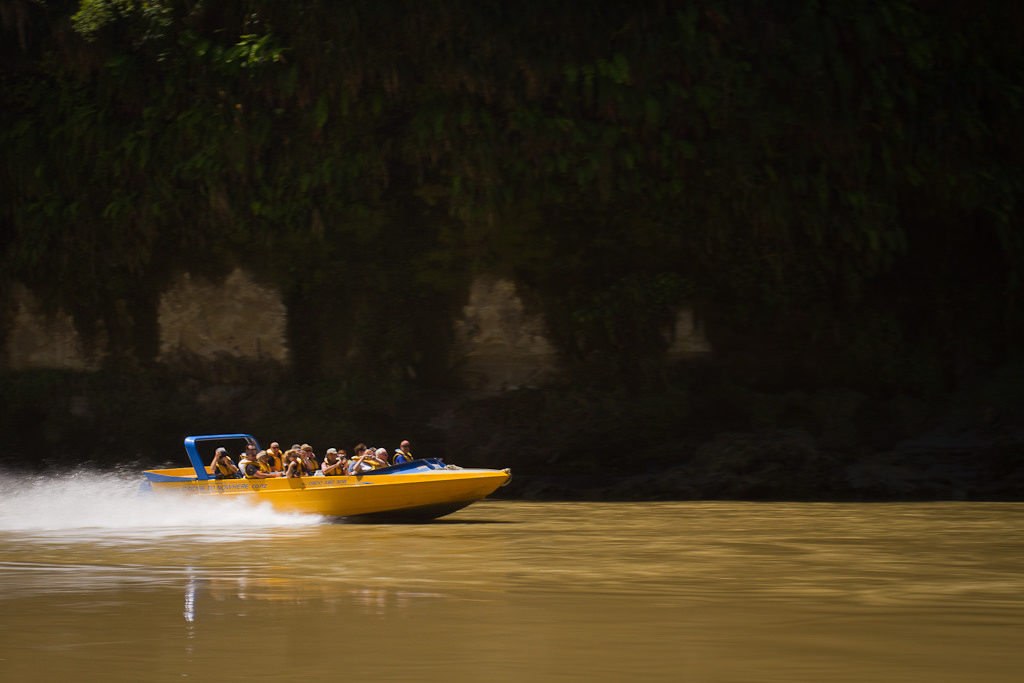 Photo by Brendon & Keryn
Photo by Brendon & Keryn
There were canoes to be found at various points along the river and we were dropped off at a rocky landing where two canoes waited. After we were given a brief run down on how to steer it was then two to a canoe and we were on our way. The river was running high (though it had fallen 3 meters since the day before) so we probably could have survived by relaxing and occasionally making sure we were steering the right way. Wide and deep the river was mostly peaceful, we explored a tributary and checked out a waterfall, careful of the occasional jet boat passing. There were some mild rapids to negotiate which looked much worse than they actually were, the odd splash of water the only problem encountered.
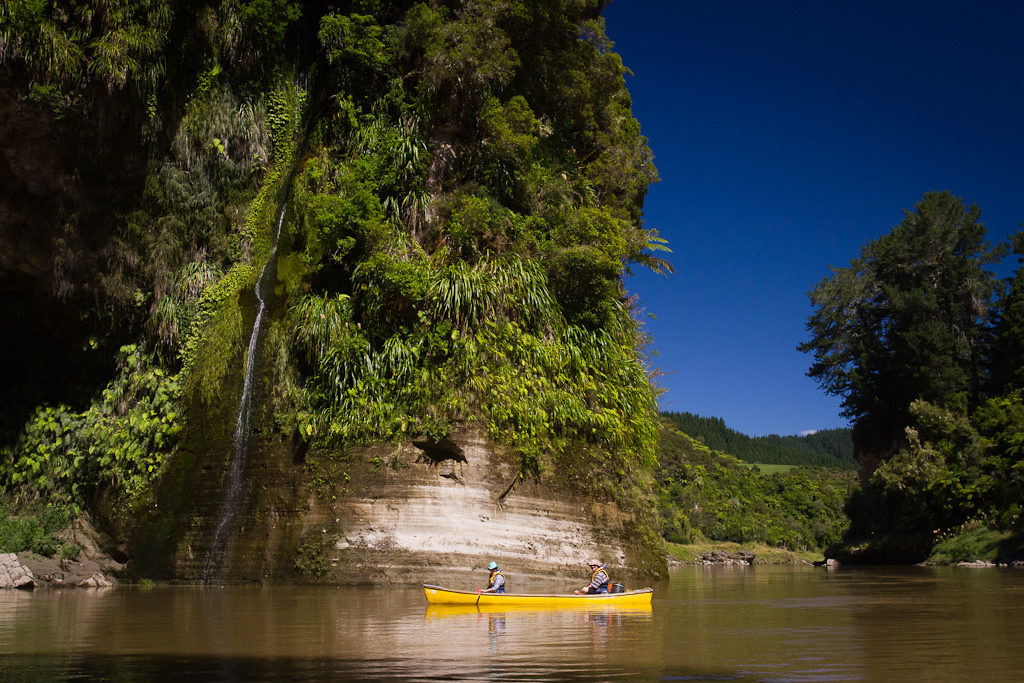 Photo by Brendon & Keryn
Photo by Brendon & Keryn
Just at the point where we were being to get hungry and wondering how much longer we’d have Ben came around the approaching bend in the river and let us know we were just about to reach the wharf. We had one last rapid to contend with and were warned that we should not head to close to the left of the river. Naturally we hit the sweet spot and got a bit of a spin and twist as we exited the rapid but not enough to tip us out. Ben helped us out and we were left with the walk back up to the office to collect our bags before driving back to Ohakune.
We had dinner in town and celebrated the New Year a good 5 hours early. The thought of seeing in the New Year over ruled in favour of a good nights sleep before attempting the Tongariro Alpine Crossing the next day. All very sensible.
